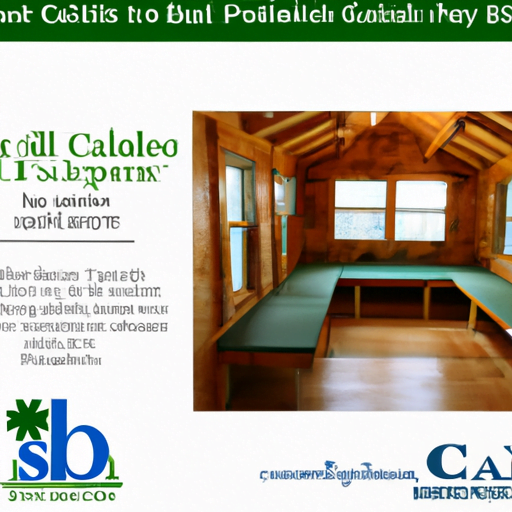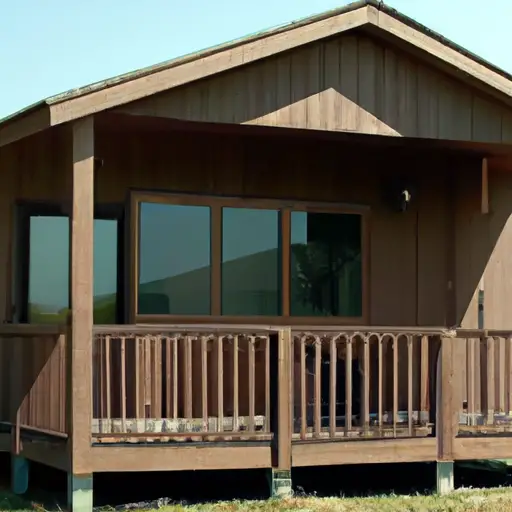So, you’re considering living off the grid? That’s awesome! It’s a big decision, but one that can offer you a life of freedom and self-sufficiency. One thing you’ll need to figure out is the size of your off-grid cabin. After all, you want to make sure you have enough space to live comfortably, but not so much that it becomes a burden. So, what is a good size for an off-grid cabin? Well, that depends on a few factors, such as your lifestyle, budget, and the amount of land you have available.
When it comes to the size of your off-grid cabin, there’s no one-size-fits-all answer. It really depends on what you want and need. If you’re planning on living alone or with a partner, a smaller cabin might be all you need. A tiny house or a small cabin can offer all the essentials, like a kitchen, bathroom, and bedroom, while still being cozy and easy to maintain. On the other hand, if you have a large family or plan on hosting guests regularly, you might want to consider a larger cabin with multiple bedrooms and more living space.
Another factor to consider is your budget. Building an off-grid cabin can be expensive, so it’s important to determine how much you’re willing and able to spend. Keep in mind that larger cabins will generally cost more to build and maintain. However, if you’re handy and willing to put in the work, you can save money by building your own cabin or using salvaged materials. Just make sure you’re realistic about your budget and don’t overextend yourself.
In conclusion, finding the perfect size for your off-grid cabin is a personal decision that depends on your lifestyle, budget, and preferences. Take some time to really think about what you want and need in a living space, and don’t be afraid to start small if that’s what’s best for you. Remember, living off the grid is all about simplifying and living with less, so embrace the opportunity to create a cozy and sustainable home that suits your unique needs. And, if you want to learn more about off-grid living and how to build your own cabin, keep reading our article for some helpful tips and advice.
Finding the Perfect Size for Your Off-Grid Cabin
When considering living off-grid, one of the most important decisions you will face is choosing the right size for your cabin. Designing and building an off-grid cabin requires thoughtful consideration of several factors, including location, climate, lifestyle, activities, budget, and resources. By taking the time to assess these factors, you can find the perfect size for your off-grid cabin that suits your needs and enhances your experience of off-grid living.
Importance of Location and Climate
The location and climate of your off-grid cabin play a significant role in determining the ideal size for your living space. When choosing the right region for your cabin, consider factors such as natural resources availability, access to amenities, and proximity to essential services. Additionally, you should carefully evaluate the climate of the region, including temperature variations, precipitation patterns, and extreme weather events.
Adapting Cabin Size to Lifestyle and Activities
Your lifestyle and planned activities will also influence the size of your off-grid cabin. Consider the size of your family and the composition of your household. If you have a large family, you may require additional bedrooms and living spaces. Similarly, if you have specific hobbies or interests, such as crafting, woodworking, or gardening, you will need to allocate space for these activities. Furthermore, think about your storage and workspace needs, as proper organization and functionality are essential in an off-grid setting.
Budget and Resources Considerations
Another critical factor to consider is your budget and available resources. The cost of construction for an off-grid cabin can vary significantly depending on factors such as location, building materials, and labor costs. Additionally, it’s important to consider the ongoing maintenance and upkeep expenses. Opting for renewable energy systems, such as solar panels or wind turbines, may increase the initial cost but can provide long-term savings.
Designing Efficient and Practical Cabin Layouts
Efficiency and practicality are key when designing the layout of your off-grid cabin. Open floor plans can create a sense of spaciousness and flexibility, making your living space feel larger than it actually is. Consider multi-functional spaces that can serve multiple purposes, such as a living room that can also be used as a guest bedroom. Effective storage solutions, such as built-in cabinets, shelves, and closets, can help you maximize the available space and keep your cabin organized.
Optimizing Space with Smart Furniture Choices
Choosing the right furniture can make a significant difference in optimizing space in your off-grid cabin. Look for foldable and expandable furniture options that can be easily adjusted to accommodate different activities and save space when not in use. Similarly, consider investing in space-saving storage units, such as ottomans with hidden storage compartments or beds with built-in drawers. Convertible bed designs, such as sofa-beds or murphy beds, can help you maximize the functionality of your sleeping area.
Vertical Solutions: Maximizing Vertical Space
When working with limited space, it’s essential to utilize every available inch, including vertical space. Vertical storage systems, such as wall-mounted shelves or hanging baskets, can help you keep your belongings organized and accessible. Loft areas can be used for sleeping arrangements, allowing you to create additional living space on the main level. Additionally, vertical green walls not only add aesthetic appeal but also enhance indoor air quality and provide insulation.
Building Off-Grid Cabins with Sustainable Materials
Choosing sustainable materials for your off-grid cabin offers numerous benefits. Not only do they have a lower environmental impact, but they can also improve energy efficiency and indoor air quality. Some examples of eco-friendly construction materials include recycled wood, bamboo, reclaimed metal, and natural insulation materials like sheep wool or cellulose. Additionally, incorporating reuse and recycle strategies into your building process can further reduce waste and contribute to a more sustainable lifestyle.
Considering Future Expansion and Flexibility
As you plan for your off-grid cabin, it’s essential to consider future expansion and flexibility. Modular cabin designs provide the versatility to add additional modules or annexes as your needs and family grow. Flexible floor plans allow for easy reconfiguration of the space to adapt to changing circumstances or preferences. Lastly, it’s crucial to prepare for future needs, such as accommodating aging in place or making provisions for potential off-grid community development.
Conclusion
Finding the perfect size for your off-grid cabin requires careful consideration of the factors outlined above. By evaluating location and climate, adapting the cabin size to your lifestyle and activities, considering budget and resources, designing an efficient layout, optimizing space with smart furniture choices, maximizing vertical space, using sustainable materials, and planning for future expansion, you can create a functional and comfortable off-grid living space that meets your unique requirements. Remember, the size of your off-grid cabin should reflect your values, priorities, and the vision you have for your off-grid lifestyle. Make sure to thoroughly evaluate each factor and make informed decisions that will contribute to a rewarding and fulfilling off-grid living experience.





